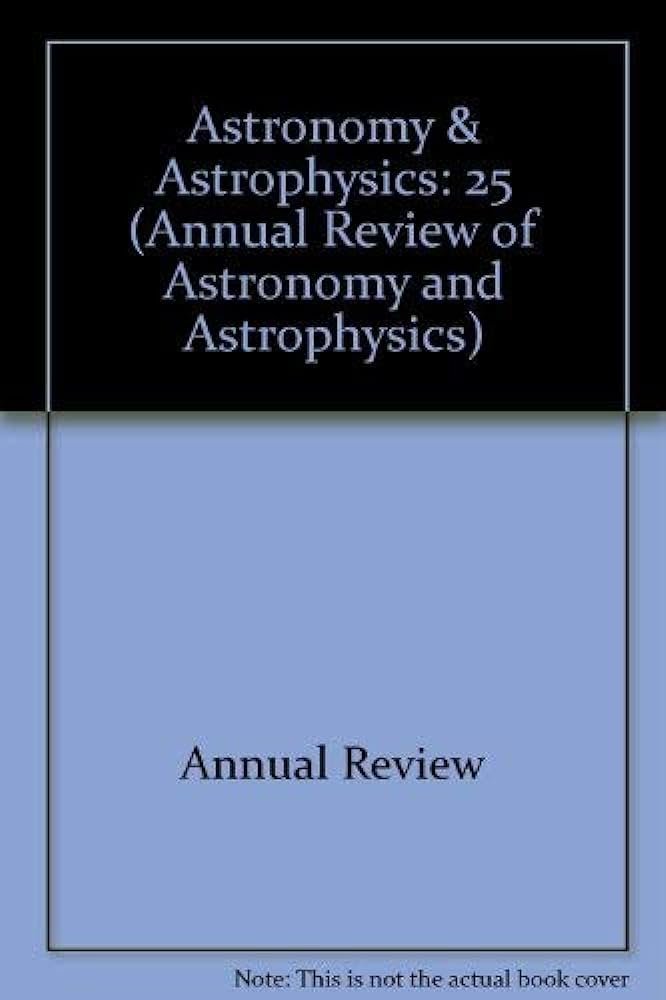Streams, Substructures, and the Early History of the Milky Way
IF 32.5
1区 物理与天体物理
Q1 ASTRONOMY & ASTROPHYSICS
Annual Review of Astronomy and Astrophysics
Pub Date : 2020-02-11
DOI:10.1146/ANNUREV-ASTRO-032620-021917
引用次数: 117
Abstract
The advent of the second data release of the Gaia mission, in combination with data from large spectroscopic surveys, is revolutionizing our understanding of the Galaxy. Thanks to these transformational data sets and the knowledge accumulated thus far, a new, more mature picture of the evolution of the early Milky Way is currently emerging. ▪ Two of the traditional Galactic components, namely, the stellar halo and the thick disk, appear to be intimately linked: Stars with halo-like kinematics originate in similar proportions from a heated (thick) disk and from debris from a system named Gaia-Enceladus. Gaia-Enceladus was the last big merger event experienced by the Milky Way and was completed around 10 Gyr ago. The puffed-up stars now present in the halo as a consequence of the merger have thus exposed the existence of a disk component at z ∼ 1.8. This is likely related to the previously known metal-weak thick disk and may be traceable to metallicities [Fe/H] [Formula: see text] −4. As importantly, there is evidence that the merger with Gaia-Enceladus triggered star formation in the early Milky Way, plausibly leading to the appearance of the thick disk as we know it. ▪ Other merger events have been characterized better, and new ones have been uncovered. These include, for example, the Helmi streams, Sequoia, and Thamnos, which add to the list of those discovered in wide-field photometric surveys, such as the Sagittarius streams. Current knowledge of their progenitors’ properties, star formation, and chemical evolutionary histories is still incomplete. ▪ Debris from different objects shows different degrees of overlap in phase-space. This sometimes confusing situation can be improved by determining membership probabilities via quantitative statistical methods. A task for the next few years will be to use ongoing and planned spectroscopic surveys for chemical labeling and to disentangle events from one another using dimensions other than phase-space, metallicity, or [α/Fe]. ▪ These large surveys will also provide line-of-sight velocities missing for faint stars in Gaia releases and more accurate distance determinations for distant objects, which in combination with other surveys could also lead to more accurate age dating. The resulting samples of stars will cover a much wider volume of the Galaxy, allowing, for example, the linking of kinematic substructures found in the inner halo to spatial overdensities in the outer halo. ▪ All the results obtained so far are in line with the expectations of current cosmological models. Nonetheless, tailored hydrodynamical simulations to reproduce in detail the properties of the merger debris, as well as constrained cosmological simulations of the Milky Way, are needed. Such simulations will undoubtedly unravel more connections between the different Galactic components and their substructures, and will aid in pushing our knowledge of the assembly of the Milky Way to the earliest times.星系流、亚结构和银河系的早期历史
盖亚任务的第二次数据发布,结合大型光谱调查的数据,正在彻底改变我们对银河系的理解。多亏了这些转换数据集和迄今为止积累的知识,一幅新的、更成熟的早期银河系演化图景正在出现。▪两个传统的银河系组成部分,即恒星光晕和厚盘,似乎是紧密相连的:具有类似光晕运动的恒星以相似的比例起源于加热的(厚)盘和来自盖亚-恩克拉多斯系统的碎片。盖亚-土卫二是银河系经历的最后一次大合并事件,大约在10亿年前完成。由于合并的结果,膨胀的恒星现在出现在光晕中,因此暴露了z ~ 1.8的盘成分的存在。这可能与先前已知的金属弱厚盘有关,并可能追溯到金属丰度[Fe/H][公式:见文本]−4。同样重要的是,有证据表明,与盖亚-土卫二的合并引发了早期银河系的恒星形成,似乎导致了我们所知道的厚盘的出现。▪其他并购事件的特征得到了更好的描述,并发现了新的并购事件。其中包括,例如,Helmi溪流,Sequoia和Thamnos,它们添加到广域光度调查中发现的列表中,例如人马座溪流。目前对它们祖先的性质、恒星形成和化学演化史的了解仍然不完整。▪来自不同物体的碎片在相空间中呈现不同程度的重叠。这种有时令人困惑的情况可以通过定量统计方法确定成员概率来改善。未来几年的一项任务将是使用正在进行和计划中的光谱调查来进行化学标记,并使用相空间、金属丰度或[α/Fe]以外的维度来解开事件之间的相互纠缠。▪这些大型巡天还将提供盖亚释放中暗淡恒星的视线速度,以及对遥远天体更精确的距离测定,与其他巡天相结合,也可能导致更精确的年龄测定。由此产生的恒星样本将覆盖银河系更大的区域,例如,将内晕中发现的运动子结构与外晕中空间密度过大的结构联系起来。迄今为止获得的所有结果都符合当前宇宙学模型的预期。尽管如此,定制的流体动力学模拟来重现合并碎片的详细特性,以及银河系的受限宇宙学模拟,都是必要的。这样的模拟无疑将揭示银河系不同组成部分及其子结构之间的更多联系,并将有助于我们将银河系的组装知识推向最早的时代。
本文章由计算机程序翻译,如有差异,请以英文原文为准。
求助全文
约1分钟内获得全文
求助全文
来源期刊

Annual Review of Astronomy and Astrophysics
地学天文-天文与天体物理
CiteScore
54.80
自引率
0.60%
发文量
14
期刊介绍:
The Annual Review of Astronomy and Astrophysics is covers significant developments in the field of astronomy and astrophysics including:The Sun,Solar system and extrasolar planets,Stars,Interstellar medium,Galaxy and galaxies,Active galactic nuclei,Cosmology,Instrumentation and techniques,
History of the development of new areas of research.
 求助内容:
求助内容: 应助结果提醒方式:
应助结果提醒方式:


